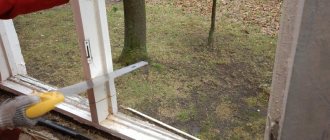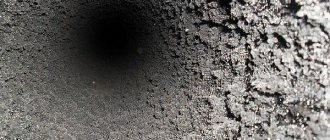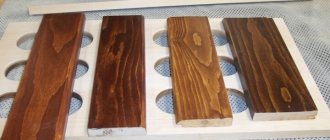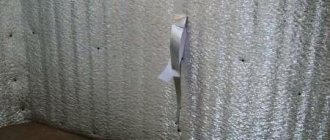Good day, dear amateur builders!
Are you planning a renovation? Do you need to seal joints, cracks and crevices? Don't know which tool to use? Friends, polyurethane foam will do this job flawlessly.
Don't have a construction gun? You can buy a relatively inexpensive tool at any specialty store. Did you spend a lot of money on renovations? No opportunity to purchase “weapons”? Understood.
In this case, here is the topic of the article - polyurethane foam without a gun: how to use this “construction gadget” without having some experience? Let's look at this in more detail.
Polyurethane foam sealant: a little theory
How to work with sealant without a foam gun? Very simple. But first, let's talk a little about the main character of this article - foam. For what? And then, to understand the principle of operation of polyurethane foam. I think no one wants to ruin the substance and the home. It is so? Great. Then let's get started.
Story
The sealant was born thanks to the German chemist-technologist Otto Bayer. He invented the substance back in 1937. Or rather, he discovered polyurethane. And in 1970, specialists from an English company invented polyurethane foam sealant.
It has been tested and improved over the years. In 1980 it was used by construction workers in Sweden. The invention was to the liking of many maestros of architectural art, since it had a number of positive properties.
Today, of course, sealant is produced in many countries. For its production, exclusively innovative technologies are used.
Concept
Polyurethane foam or polyurethane foam sealant is a substance that consists of two components - polyols and methyl...ate (you'll break your tongue there). In addition, in the manufacturing process of the product, stabilizers, catalysts, a mixture of butane and propane, etc. are used.
Additional Tips
There are several recommendations for those who are interested in using polyurethane foam; the videos will also help you understand this issue.
- The water sprayer and knife are prepared in advance in order to later get rid of the excess that was squeezed out along with the rest of the mass.
- If foam appears in unnecessary places, it is removed using a soft sponge with acetone. These are standard terms of use.
- With economical consumption, it becomes easier to avoid material costs. The applied mixture can also be stored for quite a long time.
- After applying foam at home and in other objects, the surface is treated after a maximum of 4 hours. After 7-8 hours it will be more difficult to cut the material as everything will have completely hardened.
- The work must be carried out in a respirator; it will protect human organs from foreign substances getting inside. Gloves and goggles are also recommended.
- There is no need to wait until the color of the polyurethane foam darkens while using it. This means the beginning of a reaction to ultraviolet light.
- Polyurethane foam cannot be used near open fire, cylinders cannot be stored where the sun constantly shines. The sealant contains substances that can be flammable.
- When applied to a dirty surface, you can also encounter problems. It is better to use a vacuum cleaner first, and at the same time clean the floors.
- Too strong temperature fluctuations can disrupt the structure of the composition.
It is important to use the material wisely depending on the time of year and temperature.
Specifications
Pena is a lady with excellent technical characteristics, for which she has gained an army of fans. So, the characteristics of polyurethane foam are as follows:
- shrinkage – 5%;
- porosity – 88%;
- output volume – 300 ml can – 20 l of foam, 500 ml – 40 l, 750 ml – 50 l, 1000 ml – 80 l;
- polymerization speed - 20 minutes - gain of useful volume, 4 hours - hardening, 24 hours - complete hardening;
- adhesion – excellent adhesion to wood, concrete, glass, metal, PVC, stone, poor adhesion to silicone and polyethylene;
- heat resistance - -45/+90°С;
- strength – 3–5 N/cm2.
Always buy extra foam. Manufacturers often deceive consumers. So, for example, they write “50 liters” on the cylinder, but in reality it is much less, well, somewhere around 25–30 liters. I think everyone understands why cunning manufacturers do this - a common marketing ploy. Therefore, play it safe.
Peculiarities
Cured polyurethane foam is an elastic, solid material of a yellowish-white color. This very light substance has excellent heat and sound insulation properties. It very quickly loses its properties under the influence of ultraviolet radiation, so it is used mainly indoors.
This type of foam has a number of advantages that make it stand out from other materials:
- increased moisture resistance, high levels of sound and heat insulation;
- low current conductivity, which allows it to be used when installing electrical networks;
- many types of foam are resistant to fire, which allows expanding the scope of its application;
- after leaving the cylinder, such foam expands in volume and fills even those microcracks into which it is impossible to insert the gun tube;
- polyurethane can be used to glue surfaces made of different materials, for example, wood or brick;
- The foam is absolutely non-toxic and resistant to chemical attack.
Almost all of the above properties must be indicated by the manufacturer in the appropriate certificates, which can be requested from the seller.
The packaging itself must contain the following information:
- foam expansion volume. It can range from 10 to 300%, but most often the actual foam is still slightly less, since this percentage is indicated for ideal conditions;
- its viscosity;
- the volume of the container itself.
Most often, all these characteristics depend on the type and purpose of the foam, so you need to know which polyurethane it is and what it should be used for.
Application area
The sealant has eclipsed many of its predecessors - plaster, mineral wool tapes, cement, bitumen, etc., which is no wonder.
It is used for:
- installation of door and window blocks;
- fastening insulation, waterproofing, sound insulation;
- filling cracks and crevices formed during repairs;
- filling voids that appeared during construction;
- performing facing works;
- filling holes, cracks, cracks in interior items.
The substance has a wide range of applications. Because of this, it will definitely not be forgotten, somewhere on a dusty shelf in the garage or closet.
Foam a small gap
The standard diameter of the gun tube allows you to foam seams up to 5 cm at a time. If you need to foam a larger seam, this is done in several passes. But what to do if the seam is very small for a standard tube?
I do not recommend using narrow tubes for this. The longer the narrow tube, the more difficult it is to control foaming, as spitting appears. It is better to make a narrower end at the end of a thicker tube. To do this, you can use a narrowed tip of the pen, or the same heat-shrink tube, which can easily be made narrower at the end.
Classification
In order not to feel like a “blonde” while “shopping”, you should study the varieties of the substance.
Release:
- professional (for a pistol);
- household (with a tube nozzle).
Compound:
- two-component;
- one-component.
Flammability:
- B1 – off;
- B2 – lights up, but goes out;
- B3 – lit.
Season:
- winter – used at outside temperatures of -20/+35°C;
- summer – used at +5–35°С;
- winter-spring-summer-autumn – used at -10/+35°C.
Usage:
- reusable – reusable;
- disposable – used once (the remainder is thrown away).
So, we’ve sorted out the types of the main character of the article.
Which one is better? Well, to each his own. For example, for large volumes, specialists use professional two-component polyurethane foam, which is distinguished by its all-season, non-flammable and reusable properties. For those interested, here is an article about sprayed thermal insulation. But we, as non-professionals, can use a household option with flammability class B1, intended for one-time use.
Subtleties of application
First you need to determine what type of material to use: household, professional foam. If you plan to process a large area, you need to take into account the volume of the cylinder. Household-grade products from some manufacturers are sometimes of worse quality than their professional-type counterparts. For this reason, for more serious problems, it is better to choose the latter option. Possible methods of applying foam without a gun:
- Professional grade material is used, for which a tube is used. You should be prepared for the fact that under high pressure foam will come out in excess.
- Use household material, attaching a tube to the valve, which is equipped with a cylinder.
- Professional foam is used by attaching two tubes of different sections: first a larger one, then a tube of a smaller diameter is inserted into it and fixed well. This will reduce material consumption.
Polyurethane foam sealant: a little practice
So, we have learned a lot about polyurethane foam sealant. It's time to figure out how to use it without a gun.
Step-by-step instruction
I’ll be honest: it’s difficult to work with foam without a gun, but it’s possible, since the household version has a special tube. So, let's start operation "X".
The process consists of the following steps:
- gloves are put on (the best option);
- the surface for work is prepared: it is cleaned of dirt and dust;
- if necessary (if the gaps are too wide or deep) they are sealed with pieces of foam plastic or its analogues;
- shake the container (1 minute) so that the foam has a uniform consistency and intensive release from the container;
- Using an ordinary household sprayer, lightly moisten the foaming area with water - (liquid should not flow or drip);
- remove the cap from the cylinder;
- put a special tube, which comes with the kit, onto the protrusion valve;
- the edge of the tube is brought to the area that needs to be filled with foam, and the valve is pressed (the seam being processed is half filled);
- important point: the working position of the cylinder is bottom up;
- after 30 minutes, the treated area is checked, if there are any “jambs” left, foam is added;
- after a day (but it can be done much earlier), the frozen excess polyurethane foam is cut off with a sharp stationery knife;
- finishing work must be carried out, since the foam is “afraid” of ultraviolet radiation (sunlight) - this is plaster, painting or other cladding.
Difficult? Difficult? No. There is absolutely nothing to be afraid of, but there is no need to relax either...
Why do experts advise using a pistol?
Even if you manage to do without a professional pistol, experts advise still using the tool to achieve your goals. There are several advantages of the pistol:
- saving sealant. When you use a mounting gun, you save a lot of foam. In the case of using a straw (homemade or the one included in the kit), the consumption increases up to 3 times. This is especially important when carrying out large-scale repair work;
- the most accurate filling of holes. Due to the narrow nozzle, it is possible to fill even hard-to-reach places and minimal gaps;
- convenient and fast. In a few seconds you can easily foam a 1-2 meter seam. With a straw, this process will increase significantly. If you need to get the job done quickly and efficiently, it’s better to use polyurethane foam with a gun.
For large-scale work, it is better to purchase a gun, install it in a cylinder and take advantage of the professional method. If you want to foam a window in your house, you can get by with household models without additional purchase of a gun.
Servicing the foam can after work
Of course, if the work was carried out without a gun, the can of foam is thrown away, since the sealant hardens in the tube and valve after use. Reuse is not possible. But I have one folk secret in my bins, which tells about how to keep the valve mechanism operational and ready for combat.
The secret is quite simple: in order for the polyurethane foam to be reused, you just need to block the air access to the valve mechanism. How to do it? I'll tell you now.
It is necessary to insert a foreign object-plug into the tube filled with foam, which will prevent air from entering it. After sealing, the container should be placed in a dark and cool place.
If there is a need for foam, it is enough to cut off part of the tube in the place where the installed plug is located. For example, I never wash my pistol, and it has always been ready and loaded for five years now. Thus, even household foam can be reused many times.
In addition, the cylinder should be kept clean. If foam gets on it, you need to wipe the container using a solvent, avoiding getting the plastic elements wet. By the way, you should not carry out sealing and insulation work in the rain and snow - it is fraught with poor quality workmanship.
Life hack: how to do without a foam gun
If you don’t have a mounting gun on hand, or it breaks down during work, you can use improvised methods. We invite you to pay attention to a simple alternative to the tool. To do this you will need a wire braid. To use it, we take out the core. After this, we will need a dowel of a suitable diameter, cut it to the cut. After this, it becomes shortened and convenient to use. We put the dowel on the end of the braid. As a result, the slot on the dowel will disappear. Otherwise, foam will leak out during use. If you can’t put it on tightly, trim the dowel a little more.
The dowel fits perfectly due to its tight fit. We tear off the lid of the cylinder, attach the dowel and gradually begin to press. The polyurethane foam begins to come out of the container. When working with such a homemade device, be sure to use protective gloves.
VIDEO: How to use foam without a gun











